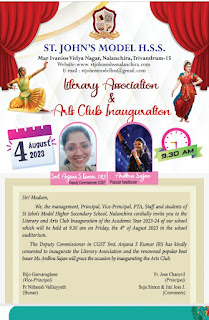Navigating the Waters of Teaching Practice: A Student Teacher's Journey in Physical Science
Becoming a teacher is a transformative journey, one that involves stepping out of the classroom and into the shoes of an educator. As a student teacher, I had the opportunity to embark on this exhilarating adventure during my college years, focusing on teaching physical science. In this blog, I will share my experiences, challenges, and insights on the preparation of teaching practice, crafting lesson plans, and creating effective teaching aids within the confines of my college campus.
Preparation for Teaching Practice
The anticipation leading up to teaching practice is akin to that of an actor preparing for a big performance. The first step for me was thorough lesson planning. Here's what I learned:
Know Your Audience: Understanding the students you'll be teaching is crucial. Their prior knowledge, learning styles, and interests must be considered when creating lesson plans.
Align with Curriculum: My college provided a curriculum to follow, and I ensured my lesson plans were in harmony with it. This alignment is critical for a seamless learning experience.
Diverse Teaching Methods: I experimented with various teaching methods, such as lectures, demonstrations, group activities, and multimedia presentations, to engage students effectively.
Lesson Plans in Physical Science
Lesson planning is both an art and a science. Crafting engaging and informative lesson plans for physical science was a challenging yet rewarding experience. Here are some key takeaways:
Clear Objectives: Each lesson should have clear, measurable learning objectives. These objectives guided my teaching and helped students understand what was expected of them.
Interactive Elements: Incorporating hands-on experiments and interactive activities made complex scientific concepts more accessible and enjoyable for students.
Assessment Strategies: I used a variety of assessment methods, including quizzes, tests, and project work, to gauge students' understanding and progress.
Teaching Aid Preparation
Teaching aids are the backbone of effective teaching. In the realm of physical science, visual aids, and hands-on materials play a vital role. Here's how I prepared them:
Visual Aids: I created visually appealing slideshows, diagrams, and charts to illustrate concepts. These aids helped students visualize abstract ideas.
Hands-On Materials: In physical science, experimentation is key. I prepared and organized lab materials meticulously to ensure smooth experiments during class.
Technology Integration: Utilizing technology, such as interactive simulations and educational apps, enhanced the learning experience and kept students engaged.
Challenges and Growth
Like any journey, my teaching practice came with its fair share of challenges. Some students found certain topics difficult to grasp, and managing classroom behavior could be demanding. However, these challenges were invaluable in shaping me as an educator. I learned to adapt, be patient, and continuously improve my teaching methods.
Conclusion
My time as a student teacher in physical science was an incredible learning experience. It reinforced the idea that teaching is not just about delivering content but also about inspiring and nurturing young minds. Preparation, effective lesson planning, and creative teaching aids were essential tools in this journey. While challenges were a part of the process, they served as opportunities for growth and self-improvement. As I continue on my path to becoming a full-fledged teacher, I carry these experiences with me, ready to inspire and educate future generations of budding scientists.


.jpeg)


Comments
Post a Comment